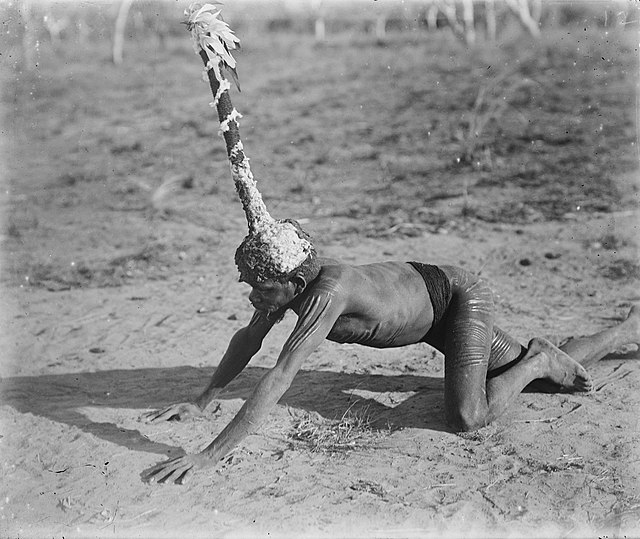During the Australian gold rushes, starting in 1851, significant numbers of workers moved from elsewhere in Australia and overseas to where gold had been discovered. Gold had been found several times before, but the colonial government of New South Wales had suppressed the news out of the fear that it would reduce the workforce and destabilise the economy.
Gold diggings, Ararat, Victoria, by Edward Roper, 1854
Australian gold diggings, by Edwin Stocqueler, c. 1855
Edward Hargraves, returning the salute of the gold miners, 1851, Thomas Balcombe.
A large gold specimen from the Ballarat mines, weighing over 150 grams, size 7.4×4.4×2.3 cm.
The history of Australia is the history of the land and peoples of the continental land mass and offshore territories which now comprise the Commonwealth of Australia. The Commonwealth of Australia came into existence on 1 January 1901 as a federation of former British colonies, however the human history of Australia commences with the arrival of the first ancestors of Aboriginal Australians by sea from Maritime Southeast Asia between 50,000 and 65,000 years ago, and continues to the present day multicultural democracy.
Rock painting at Ubirr in Kakadu National Park. Evidence of Aboriginal art in Australia can be traced back some 30,000 years.
Kolaia man wearing a headdress worn in a fire ceremony, Forrest River, Western Australia. Aboriginal Australian religious practices associated with the Dreamtime have been practised for tens of thousands of years.
A Luritja man demonstrating his method of attack with a large curved boomerang under cover of a thin shield (1920)
Abel Tasman, the first European to discover Van Diemen's Land, now known as Tasmania








